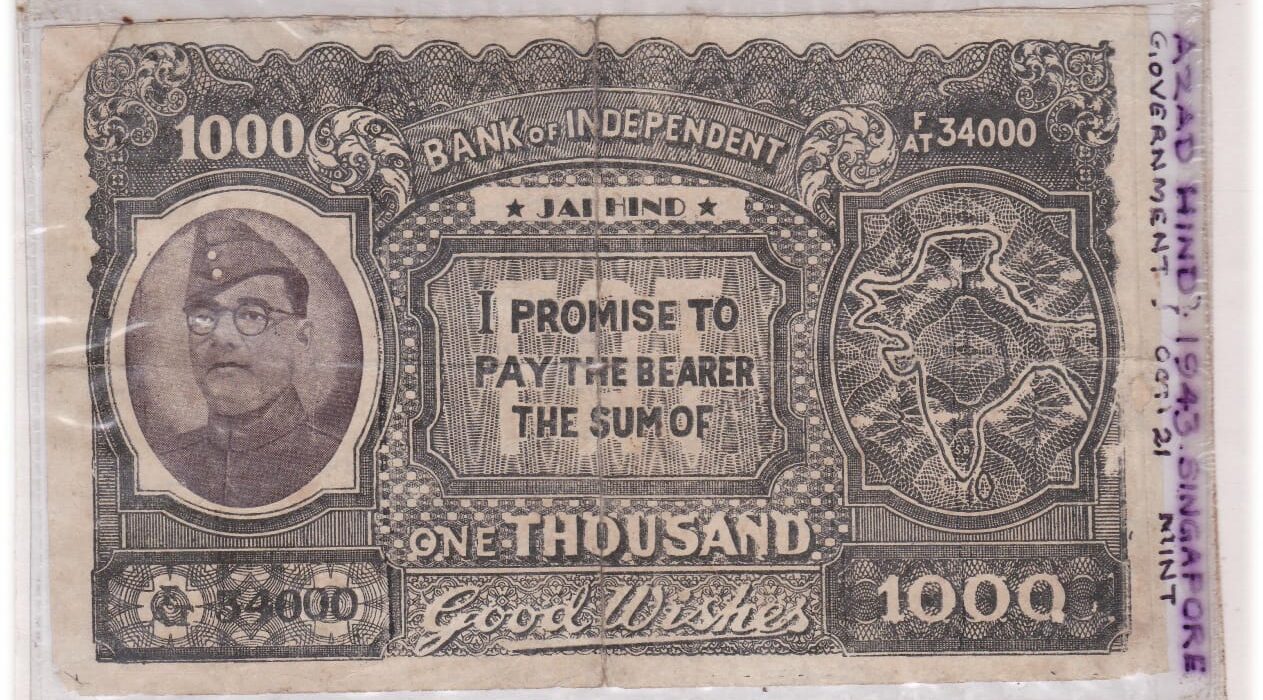The National Bank of Azad Hind: A Revolutionary Institution in India’s Struggle for Independence
The National Bank of Azad Hind, established by Netaji Subhas Chandra Bose in April 1944, stands as a remarkable symbol of India’s fight against British colonial rule. Founded in Rangoon, Burma (now Yangon, Myanmar), the bank was an integral part of the Azad Hind government—a provisional government created by Bose during World War II with the ambitious goal of liberating India from British dominance.
Purpose and Significance
The primary purpose of the National Bank of Azad Hind was to serve as the financial backbone of the Azad Hind government and the Indian National Army (INA). By establishing a sovereign financial institution, Bose sought to assert the legitimacy and independence of his provisional government. The bank played a crucial role in financing the INA’s military campaigns and the administrative activities of the Azad Hind government, reflecting Bose’s strategic approach to building the foundations of a free Indian state.
Currency Issued by the Bank
One of the most significant aspects of the National Bank of Azad Hind was its issuance of currency notes and coins. These were not merely financial instruments but powerful symbols of the independence that Bose and his followers envisioned for India. The currency, which included denominations in rupees and annas similar to those used in British India, was intended for use within the territories under the control of the Azad Hind government.
The design of the currency was imbued with nationalist sentiment, featuring images of Subhas Chandra Bose and other symbols of Indian independence. This currency was a tangible representation of the parallel government that Bose aimed to establish, challenging British authority and inspiring hope among those who yearned for freedom.
Legal Status and Use
Despite its symbolic and practical importance within the Azad Hind territories, the currency issued by the National Bank of Azad Hind was not recognized by the British colonial government or by other Allied powers. It was, however, accepted in regions where Bose’s influence was strong and within the areas controlled by the INA. The limited circulation of this currency did not diminish its significance as a declaration of sovereignty by the Azad Hind government.
Historical Legacy
The establishment of the National Bank of Azad Hind was a bold and defiant act against British rule, reflecting Bose’s unwavering commitment to creating a functioning government for an independent India. Although the Azad Hind government’s efforts were ultimately thwarted by the defeat of Japan in World War II—an ally of Bose’s provisional government—the legacy of the bank endures.
The National Bank of Azad Hind and its currency are now regarded as rare and valuable relics of India’s independence movement. Collectors and historians alike treasure these items for their historical significance, as they represent a crucial chapter in the struggle for freedom.
The End of the National Bank of Azad Hind
With the collapse of the Azad Hind government following Japan’s defeat in World War II, the activities of the National Bank of Azad Hind came to an abrupt end. However, the legacy of the bank, much like the broader legacy of Subhas Chandra Bose and the INA, continues to inspire those who study India’s path to independence.
The National Bank of Azad Hind remains a testament to the vision and determination of Subhas Chandra Bose—a leader who dared to dream of a free and independent India, and who took concrete steps to realize that dream, even in the face of overwhelming odds.












